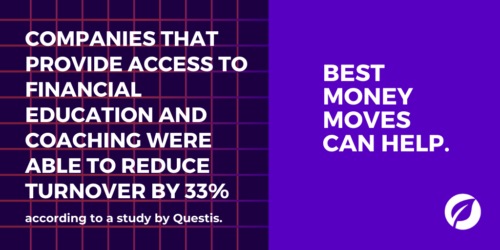
5 Benefits for Employers to Retain and Attract Top Talent
The cost of replacing an employee can range anywhere from six to nine months’ salary, according to data from SHRM. If your team is worried about the cost of losing talent, it could be time to reevaluate your benefits strategy. According to a survey by ArmadaCare, 78% of employees are more willing to stay with their employer due to their employee benefits.
Here are the 5 best benefits to help retain and attract top talent.
1. Offer competitive, matched retirement planning options.
Retirement planning is one of the most common employee benefits offered by employers, specifically a 401(k) matching plan. According to a study by SHRM and Morgan Stanley, the most important financial wellness benefit for employees was retirement planning. The additional financial security that employees feel when their retirement needs are taken care of can help reduce stress and improve office morale. For these programs, employers don’t only receive the benefit of being more attractive to potential new hires, they can also receive tax benefits for contributing to employees’ retirement accounts.
2. Support top talent with emergency fund assistance.
One of the lingering effects of the pandemic is the reduced amount of “rainy day funds” available to employees. According to a survey by PWC, 38% of employees have less than $1,000 stowed away for emergencies. Employer-sponsered emergency savings accounts may be funded similarly to 401(k) accounts. However, the money added to the accounts does not have to stay in the account long-term and the cash taken from employee’s paychecks is taxed as income.
3. Allow flexible time-off policies.
According to a survey by JustWorks, 68% of employees felt as if flexible hours had a positive impact on their team. And, according to another survey conducted by SHRM, 80% of employees said they would be more loyal to their company if they had flexible work options.
Employees have put a high value on flexible schedules and the loss of productivity is often more than worth providing the option than having to replace employees. According to that same survey by JustWorks, 76% of employers felt that flexible hours had a big impact on their ability to attract new talent. Also, flexible schedules do not necessarily result in a lack of productivity. According to SHRM, about ⅔ of employees said they are more productive working outside of a traditional work environment.
4. Invest in top talent with employee loan assistance programs.
One of the hottest new trends in employee benefits is student loan repayments. It can be a huge bonus in attracting younger talent to a company. Assistance programs go far beyond loan repayments. Many companies offer purchasing programs that assist employees in making larger purchases such as a new computer. Employee assistance programs can go outside of directly benefitting the employee as many offer aid to immediate family members of employees or anyone living with an employee.
5. Offer your top talent personalized financial coaching.
Offering the service of financial coaches adds a personal touch to the offered benefits and lets employees know that their specific needs are met. 43% of employers offer “personalized financial counseling, coaching or planning and an additional 35% are considering adding the service to their benefits according to research by the Employee Benefit Research Institute in partnership with Mercer. According to a study by Questis, companies that welcome financial empowerment through employee benefit programs and provided access to personal finance education and coaching were able to reduce turnover by 33%.
Attract and retain top talent with financial wellness solutions from Best Money Moves.
Best Money Moves can help your employees address their financial stress and improve your retention in the new year. The program uses artificial intelligence to power a mobile-first platform that measures employee financial stress, then dials it down with a unique content-mapping system that helps solve your employees’ pain points. Our triggers and alerts system, as well as budgeting tools, personal finance resources and more, help guide employees to make smarter financial decisions and reduce their overall stress.
To learn more about Best Money Moves Financial Wellness Platform, let’s schedule a call. Contact us and we’ll reach out to you soon.









